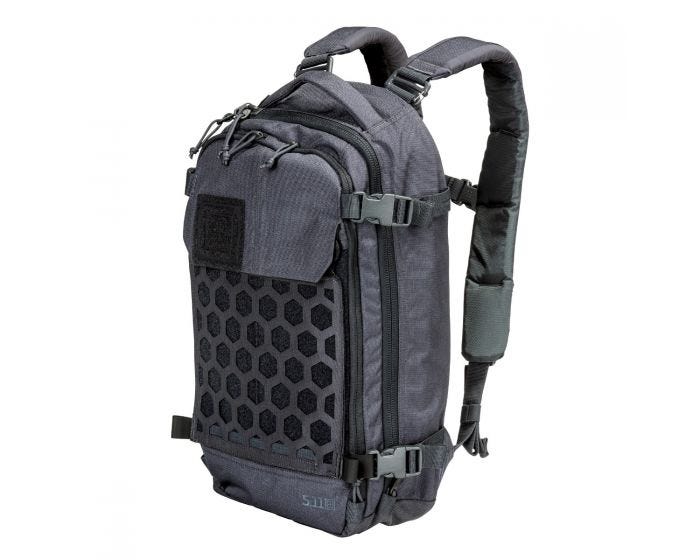Tactical bags have become increasingly popular among military personnel, law enforcement officers, hikers, outdoor enthusiasts, and survivalists. These bags are designed to carry essential gear and equipment, and they come with various features that make them practical, durable, and efficient.
In this blog post, we'll explore the benefits of a tactical bag, the history of the tactical bag, the different types of tactical bags, key features of a tactical bag, types of fabrics used in making a tactical bag, modular components on a tactical bag, molle systems used in some tactical bags, and the aesthetics of a tactical bag.
History of the Tactical Bag
The history of the tactical bag can be traced back to the military, where soldiers needed a reliable and durable way to carry their gear and equipment. The first tactical bags were simple backpacks made of canvas, with a few pockets and compartments for carrying food, water, ammunition, and other essentials.
Over time, these bags evolved to include more advanced features, such as modular components, molle systems, and specialized pockets for carrying specific equipment. Today, tactical bags are used not just by the military, but also by law enforcement officers, hikers, outdoor enthusiasts, and survivalists.
Types of Tactical Bags
There are various types of tactical bags available on the market, each designed for a specific purpose. Some of the most common types of tactical bags include:
Backpacks: Tactical backpacks are designed for carrying essential gear and equipment for extended periods of time. They typically have a large main compartment, multiple pockets, and are made of durable materials.
Messenger Bags: Tactical messenger bags are designed for carrying smaller items, such as laptops, documents, and other essentials. They often have a shoulder strap and multiple pockets for organization.
Duffel Bags: Tactical duffel bags are designed for carrying large amounts of gear and equipment, such as clothing, camping gear, and tools. They are typically made of durable materials and have multiple pockets for organization.
Sling Bags: Tactical sling bags are designed for quick access to essential gear and equipment. They typically have a single strap and can be worn across the body.
Key Features of a Tactical Bag
One of the key features of a tactical bag is its durability. Tactical bags are designed to withstand harsh conditions and heavy use, making them ideal for military and outdoor activities. They are often made of heavy-duty materials, such as nylon or Cordura, and feature reinforced stitching and padding.
Another key feature of a tactical bag is its organization. Tactical bags typically have multiple compartments and pockets for organizing gear and equipment. They may also have modular components, which allow users to add or remove pockets and pouches as needed.
Tactical bags may also feature molle systems, which are used to attach gear and equipment to the bag. Molle systems consist of webbing and loops, which allow users to attach pouches, holsters, and other accessories to the bag.
Types of Fabrics Used in Making a Tactical Bag
Tactical bags are made of various materials, including nylon, Cordura, and polyester. These materials are chosen for their durability and resistance to wear and tear. Some tactical bags are also treated with water-resistant coatings, which help to protect the contents of the bag from rain and moisture.
Modular Components on a Tactical Bag
Modular components are a key feature of tactical bags, allowing users to customize the bag to fit their specific needs. Modular components may include pouches, holsters, and other accessories that can be added or removed from the bag as needed.
Molle Systems Used in Some Tactical Bags
Molle systems are webbing and loops used on some tactical bags to attach gear and equipment to the bag. These systems allow users to add or remove pouches.
When selecting a tactical bag, you want to make sure it meets your specific needs. Here are some factors to consider when choosing a tactical bag:
Size: Consider the size of the bag and what you will be carrying. Do you need a small bag for everyday use or a larger one for multi-day trips?
Capacity: Capacity is also important as you need to make sure it can hold all of your gear. You will want to look at the cubic inch or liter capacity of the bag to ensure that it will meet your needs.
Material: The material of the bag is important as it will affect the durability and water resistance. You will want to look for bags made of durable materials such as nylon or Cordura, which are both known for their ruggedness and resistance to wear and tear.
Compartments: The number and size of compartments in the bag are also important. Look for bags with multiple compartments and pockets to keep your gear organized and easily accessible.
Straps: Comfort is key when carrying a tactical bag. Look for bags with padded shoulder straps and a comfortable back panel to reduce strain on your body.
Molle System: Some tactical bags come with a molle system, which allows you to attach additional gear to the outside of the bag. This feature can be very useful for carrying extra equipment, but it may add weight and bulk to the bag.

